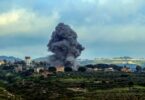Andrey Yashlavsky
American analysts suddenly realized that the previous US military strategy is useless against China in the event of a “hot” conflict over Taiwan. In their opinion, the US will suffer unacceptable losses, as evidenced by the results of computer simulation games. So, overseas experts come to an “unexpected” conclusion, it is necessary to change the strategy. How American strategists are now proposing to fight China, said Lieutenant General, Doctor of Law, Honored Lawyer of Russia, Professor Yuri Zhdanov.
Why has the US strategic concept changed so dramatically?
Has she changed? The essence of American strategy, and tactics, has always boiled down to one thing – kill more, lose less.
But this is absolutely normal, any military leader strives to achieve success with minimal losses.
Yes, but any normal, I emphasize – a normal military leader – is aware in advance what losses await him. From this he plans the operation. Or they don’t plan to.
Let’s be honest, in war both the right and the wrong are killed. Only the rightists know what they are going to die for, while the “guilty” act in a state of euphoria. And if the number of wrongdoers who died is too high, but there is no victory, hysteria begins – for what, they say, are we suffering?
Well, Americans and, say, the British, can hardly be called cowards and alarmists.
Who would argue. The British and Americans are brave, skillful, hardy and generally good soldiers. However, there are too few just wars in their history. The Americans – so they have never fought on their land with the interventionists. Their native ranches were attacked either by the same bandit cowboys or Indians. Moreover, they never (!) Faced an enemy that outnumbered them and technically. Lucky. However, they still managed to lose, for example, in Vietnam or Afghanistan. Not fatal, of course, but unpleasant. And this leaves an imprint on national psychology. Americans are gradually developing a peculiar attitude towards the war, as to a computer game: I kill, but I don’t. A loss is just a return to the previous level. You can restart the program and start all over again.
“Actually, this is what we are seeing now?” Are they trying to “reboot”?
Apparently, yes. According to the latest war games (games again!), hosted by the Center for Strategic and International Studies, Washington has already lost the war over Taiwan. The think tank’s simulations of the US-China conflict sank several US aircraft carrier strike groups, destroyed hundreds of warplanes and killed thousands of US troops in the early days of the war.
By the way, these games were planned long before the latest Taiwan crisis, which speaks of the traditional “peacefulness” of the United States. And now they add to decades of analysis of the Taiwanese scenario taught in military colleges and think tanks. The current games have confirmed at least one previously well-known conclusion: if the Americans try to fight the battle for Taiwan by relying mainly on military forces located west of Guam, US losses will be very serious. Yes, the United States and its allies can stump the Chi-nese People’s Liberation Army, so to speak. But the price may well be too high for American society.
The US has two options. The first is to abandon the solution of the problem by military means and seek a settlement through negotiations. The second is to change military strategy. Do I understand correctly that the Americans chose the second option?
You understand correctly. The Americans, alas, have so far been beaten a little and not very painfully, so these cowboys still believe that their well-aimed Colt will solve any problems – quickly and radically. Bitter disappointment will come later. In the meantime, other options, except for the use of force, are not even considered.
For example, Robert Haddick, senior fellow at the Mitchell Institute for Aerospace Studies, in an article “Defeat China’s Navy, Defeat China’s War Plan”, published September 21 in War on rocks, believes that “recent war games, like their predecessors, demonstrate that the United States needs a better plan to repel an attack on Taiwan. This means that forces and concepts that match US competitive advantages against China’s weaknesses minimize the number of forces that US commanders will have to place within range of China’s firepower.”
Sounds kind of crazy.
They think it looks very scientific. Now, Haddick proposes another scenario of possible actions, in which American bombers are concentrated against the Chinese navy and other maritime forces. According to this plan, China cannot capture Taiwan, Senkaku, or other territories in the region if its naval power is destroyed: “US bombers could become a deadly threat to China’s naval power if American politicians and military planners begin to prioritize correctly. By making China’s maritime facilities a prime target for US bombers, Washington will have a good chance of winning a counter-sea campaign in the western Pacific.”
“But wasn’t it obvious until now?”
For American strategists – no. Haddick writes that “a U.S. standby force based within China’s missile range is an important and distinctive political commitment to America’s allies in the region. At the same time, American politicians overwhelmingly favored the acquisition of short-range tactical aircraft. The US Air Force fighter-to-bomber ratio is currently 15.8 to 1, and all US Navy and Marine Corps strike aircraft are short haul. As a result, a reserve force is one of the few options available to commanders responsible for deterring or repulsing a suspected Chinese attack.
The structure of China’s “counter-intervention” forces is built around a combat network of long-range sensor-missile systems that is designed to lure and destroy US forces such as aircraft carrier strike groups. The US plan to place even more vulnerable military installations in the Chinese army’s 3,000-kilometer missile strike zone will only increase the let-hality of Beijing’s response. The US military has lea-rned how to break the Chi-nese chain of destruction of US troops. But China, like the United States, is launching new, distributed, resilient and redundant constellations of satellites to support its combat network of long-range sensor-missile systems. These new constellations, each of which consists of tens, hundreds and even thousands of small satellites connected in a network.
Again, this is not news, everything is quite logical. What excited them?
Now you will understand. According to the International Institute for Strategic Studies’ annual Military Balance database, China’s air force and navy have over 200 bombers and approximately 1,400 attack fighters, numbers that have doubled over the past decade and continue to grow. Assuming that the Chinese Air Force uses one-third of its fighter-attack and bomber fighters daily (at the most conservative estimate during a long air campaign), Chinese aircraft can fire about 1,400 accurate shots at ground and anti-ship missiles per day, with several hundred capable of reaching fixed bases and surface warships even on Guam and the Second Island Chain.
Given this missile power, this review says, “It is not surprising that the Center for Strategic and International Studies’ numerous wargame options predicted the destruction of two US aircraft carriers and their carrier wings. In another game, 900 US aircraft were destroyed, most of which were lost on the ground in missile strikes against several hub and spread bases available to US and Allied forces in the Western Pacific.
In yet another war game, the surviving US aircraft carriers and warships fled east. A maneuver that is unlikely to lift the morale of the troops left behind to deal with China’s daily rocket bombardment.”
That is, Yuri Nikolaye-vich, the Americans are afraid of possible losses?
They were horrified by the banal arithmetic calculation. And this is no secret to the Chinese. They hope that tens of thousands of American casualties in just a few days will lead to demoralization and political defeat. With expected losses an order of magnitude higher than Pearl Har-bor or 9/11, it’s entirely po-ssible. But even if this is n-ot the case, Haddick bel-ieves that American politicians do not need to take s-uch a risk. Instead of dep-loying a large number of reserve forces within range of Chinese missiles, Was-hington should instead use its long-range strike power.
So, they want to return to the version of computer “shooters”: only I kill and I have ten lives?
Yes, and they are diligently looking for such an opportunity. They believe that US bombers, even with only 141 aircraft, are a good argument against China’s naval power. The US Naval Intelligence Agency predicts that by 2030, China’s maritime forces will have more than 800 warships, coast guard boats and large “marine militia” ships – armed civilian vessels. With the addition of large commercial cargo ships, the Chinese navy for an invasion of Taiwan is likely to have more than a thousand surface units.
By contrast, American bombers will be an opposing force operating from many bases, mostly outside the reach of the Chinese military. They will be supported by widely dispersed Air Force air tankers. Haddick believes a bomber-led campaign against China’s maritime installations will keep the United States from exposing much of its reserve forces, such as aircraft carriers, short-range attack aircraft and ground troops, to Chinese military strikes.
Bombers will launch their attacks with long-range munitions, which reduces the risk to the aircraft themselves. For example, if bombers used about a third of their aircraft every day, they could deliver about 800 long-range missiles to stationary and moving sea targets daily, at least until the bombers used up all those expensive and exotic munitions.
New constellations of imaging and communications satellites, operated by both the US Space Force and the private sector, could support the anti-sea bomber mission.
Once the entire supply of missiles is exhausted, American stealth bombers could continue to use shorter range munitions.
How many stealth bombers does the US have?
Well, I’m not Gru. It is known from open American sources that there are 20 B-2As. Perhaps 16 of them are intended for combat operations, the rest are reconnaissance or training. And there’s the new B-21 Raider. Air Force Secretary Frank Kendall recently surprised listeners when he revealed that Northrup Grumman was building five B-21s, not two prototypes as previously thought. And by the mid-2030s, the US Air Force plans to purchase at least a hundred B-21s.
This means that by 2026 the US military will have at least ten or fifteen combat-ready B-21s. According to one open source analysis, there will be 20 B-21s in stock by 2027. The Air Force could reasonably expect ten stealth bomber sorties a day against China. By some estimates, this could result in over 300 precision-guided strikes against Chinese maritime targets every day.
However, in the place of the Americans, I would not be deceived by the exceptional qualities of my “invisibles”. In Belgrade, in the Military Museum, there is the wreckage of a US bomber made using Stealth technologies. This “Night hawk” F-117A was shot down by the Yugoslav air defense missile of the old Soviet “Cube” S-125. Exhibit caption: “Sorry, we didn’t know you were invisible.” I believe that now the Chinese air defense is at least as good as that of the Yugoslavs in 1999.
But, probably, American technologies do not stand still?
Undoubtedly. According to budget plans, in 2026 the US Air Force will have about 7,000 air-to-surface anti-ship missiles and 149 long-range anti-ship missiles.
The Air Force is also acquiring the Tiny Bomb II, or “Storm Breaker”. It is a lightweight munition desi-gned to accurately engage moving targets up to forty miles away, day and night, in all weather, while overcoming enemy countermeasures. By 2026, the service plans to prepare 6023 units of these weapons. As the Air Force Research Labora-tory’s Quicksink tests have shown, these munitions can be improved by installing them on precision guidance sensors.
Mark Gunzinger of the Mitchell Aerospace Inst-itute has proposed a new medium-range munition t-hat will allow stealth bom-bers to attack targets at a s-afe distance from air defe-nse systems. It will be che-ap enough to be acquired quickly and in large quantities. This munition will maximize the competitive advantages of the B-2A and B-21 stealth bombers.
However, some American analysts lament, the Air Force plans to buy 7,547 air-to-surface missiles, which are designed for fixed targets only, and only 179 long-range anti-ship missiles.
The Chinese fleet, US experts are perplexed, is for some reason not a priority for the Air Force, despite its vulnerability to US bombers. As the Taiwan-focused war games show, the shortage of US anti-ship munitions represents a missed opportunity that will come at a cost.
From this follows a recommendation to “civilian” politicians: China’s naval forces should be made the main object of US bomber aircraft.
Funding must be demanded for the rapid development of inexpensive Mark Gunzinger intermediate-range munitions and the acquisition of, say, 2,000 long-range anti-ship missiles, even if that means acquiring fewer air-to-surface missiles. Politicians could also demand that the Air Force repair and return to service some of the 17 B-1B bombers that were recently scrapped, despite the fact that each can carry 24 long-range anti-ship missiles. These relatively small expenditures will quickly increase the strike power against the Chinese fleet.
“Naive” Chinese probably do not even suspect about a possible adjustment of the American strategy?
Is it really funny? As always, reality for the US is scarier than virtual games.
The Americans, of course, are building new plans for military confrontation, but China, of course, is not standing still. After all, “shooters” can be played by both sides.
The latest figures published by Defense News show that China is expanding its submarine base on the edge of the South China Sea. Satellite photos show that he is building two new piers. And pictures of the Yulin Naval Base on the southern tip of China’s Hainan Island, taken by Maxar Technologies on July 31 this year and published on Google Earth, show the construction of two new piers under construction in addition to the four existing piers at the site. New berths are being built to the north and south of existing berths.
Let me remind you that the base is part of a large naval complex, which incl-udes the South Sea Fleet of the People’s Liberation Army of China, equipped with nuclear attack submarines and ballistic missile submarines. These include six Type 094 or Jin-class ballistic missile submarines, three of which are visible in Maksar’s image of the base. Yulin also has an underwater cave dug into the mountainside. This means that China can also quite actively fire missiles at the Americans from afar.
In addition to the berths under construction for submarines, the base is also installing a berth for large surface ships, including Chinese aircraft carriers. A new dry dock is also under construction to house an aircraft carrier and a surface ship, and a helicopter base in the nearby city of Sanya has also been refurbished.
New hangars have appeared, the parking area has been expanded and the runways have been updated. Which, again, suggests that the Chinese are ready to adequately meet the long-range American “gifts”.
Moreover, a possible change in American strategy does not cancel China’s intentions to land on Taiwan. The Southern Sea Fleet also includes much of the rapidly growing amphibious assault fleet, including the first Type 075 helicopter carrier and the bulk of its Type 071 landing platform docks. These troop-carrying ships would be a vital component of a Chinese invasion of Taiwan, if any. necessary. Or rather, when it becomes necessary.
So, the United States is unlikely to succeed in a one-sided game.






